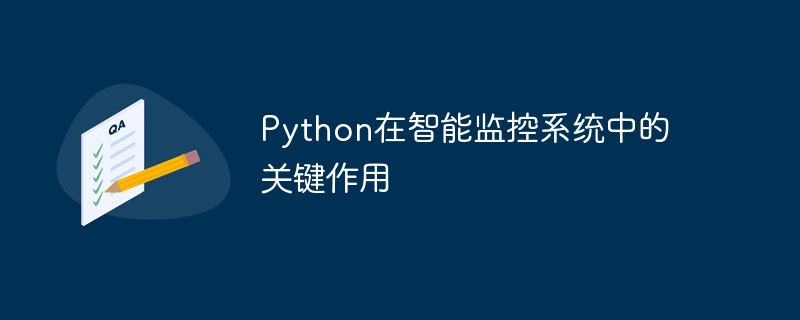

The key role of Python in intelligent monitoring systems
With the continuous advancement of technology, intelligent monitoring systems are increasingly used in various fields. In these intelligent monitoring systems, the Python language plays a vital role. Python's simplicity, efficiency, and diverse libraries make it ideal for developing intelligent monitoring systems. This article will introduce the key role of Python in intelligent monitoring systems and provide some code examples to further illustrate its use.
import cv2 # 加载训练好的人脸识别模型 face_cascade = cv2.CascadeClassifier('haarcascade_frontalface_default.xml') # 加载图像 image = cv2.imread('test.jpg') # 转换为灰度图像 gray = cv2.cvtColor(image, cv2.COLOR_BGR2GRAY) # 检测人脸 faces = face_cascade.detectMultiScale(gray, scaleFactor=1.1, minNeighbors=5) # 在图像上标记人脸 for (x, y, w, h) in faces: cv2.rectangle(image, (x, y), (x + w, y + h), (0, 255, 0), 2) # 显示结果 cv2.imshow('Face Detection', image) cv2.waitKey(0) cv2.destroyAllWindows()
import pandas as pd from sklearn.ensemble import IsolationForest # 加载数据 data = pd.read_csv('data.csv') # 筛选所需的特征 features = ['temperature', 'humidity', 'pressure'] X = data[features] # 使用孤立森林算法进行异常检测 clf = IsolationForest(contamination=0.1) clf.fit(X) # 预测异常样本 predictions = clf.predict(X) # 输出异常样本 anomalies = data[predictions == -1] print(anomalies)
Server-side:
import socket # 创建服务器套接字 server_socket = socket.socket(socket.AF_INET, socket.SOCK_STREAM) # 绑定地址和端口 server_address = ('0.0.0.0', 8080) server_socket.bind(server_address) # 监听连接 server_socket.listen(1) while True: # 等待客户端连接 client_socket, client_address = server_socket.accept() # 接收数据 data = client_socket.recv(1024) # 处理数据 # ... # 发送响应 response = 'OK' client_socket.send(response.encode()) # 关闭连接 client_socket.close()
Client-side:
import socket # 创建客户端套接字 client_socket = socket.socket(socket.AF_INET, socket.SOCK_STREAM) # 连接服务器 server_address = ('localhost', 8080) client_socket.connect(server_address) # 发送数据 data = 'Hello, server!' client_socket.send(data.encode()) # 接收响应 response = client_socket.recv(1024) print(response.decode()) # 关闭连接 client_socket.close()
In summary, Python plays an important role in intelligence monitoring system plays an important role. Its powerful image processing and computer vision functions, rich data processing and analysis tools, and flexible network communication functions make Python the preferred language for developing intelligent monitoring systems. Through code examples, we can see that Python is simple and efficient, and can help developers easily implement various intelligent monitoring functions.
The above is the detailed content of The key role of Python in intelligent monitoring systems. For more information, please follow other related articles on the PHP Chinese website!




